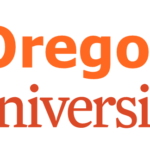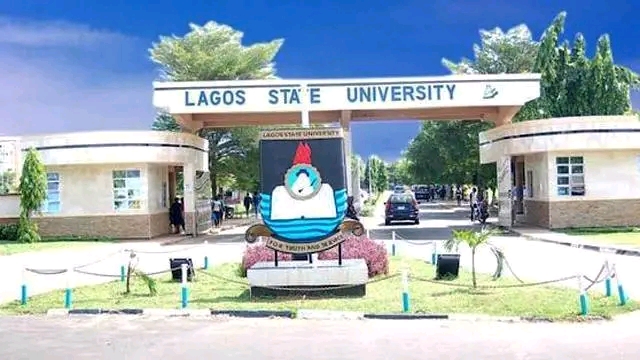Applying for loan forgiveness can seem daunting at first, but we’ve got everything you need to know right here in one place!
From knowing if your education loans are eligible, to figuring out how much you might be able to get forgiven, and even information on the application process itself.
This guide has all of the information you need to get started on your debt forgiveness journey. So keep reading to find out more!
How Does Student Loans Work?
Student loans are a complicated beast, and it’s easy to get lost in the process. To help you out, I have put together some common questions and answers about student loans.
What is the difference between subsidized and unsubsidized loans?
Subsidized loans are those where the government pays the interest on the loan while the student is in school or deferment. Unsubsidized loans are those where the borrower has to pay back both the principal and interest themselves.
SEE ALSO: How to apply for Student Loan Trust Fund (SLTF)
Who qualifies for federal loan forgiveness?
There are three main programs for federal debt forgiveness: Income-driven repayment plans, public service loan relief, and teacher loan forgiveness. Income-driven repayment plans work by having monthly payments adjusted to be more manageable based on your income; after 20-25 years of making payments under this plan, any remaining balance will be forgiven (there is no tax consequence).
Public service forgiveness forgives up to $57,500 of debt after 10 years of making qualifying payments under an income-driven repayment plan.
Teacher loan forgiveness forgives up to $17,500 in Federal Direct Loans with a remaining term not exceeding 15 years.
With that said, let us get to the main reason why you are reading this article.
SEE ALSO: How is a Student Loan Different from a Scholarship?
What is Public Service Loan Forgiveness (PSLF)?
Public Service Loan Forgiveness (PSLF) is a program that cancels student loan debt for individuals who have made ten years of eligible on-time payments while working in public service.
Eligibility and certification are determined by the U.S. Department of Education and the individual’s loan servicer, respectively. To be eligible for PSLF, you must make 120 monthly payments as part of an income-driven repayment plan or other qualifying repayment plan.
To receive PSLF certification from your loan servicer, you must submit an employment certification form every year.
SEE ALSO: Student Loan Company Email [SLC Contact Email Address]
Is PSLF worth it?
The Pay as You Earn program is a good choice for those who want to pay off their loans quickly. PSLF caps payments at 10% of discretionary income and forgives any remaining debt after 20 years.
The Income-Based Repayment (IBR) program is a better option for those with lower incomes and smaller debts. IBR caps payments at 15% of discretionary income and forgives any remaining debt after 25 years.
what if your loans are not owned by the Government, what should you do?
If your debts are not owned by the government, you will need to contact your lender and apply for debt forgiveness. Borrowers who have taken out Stafford Loans, PLUS Loans, Perkins Loans or Grad PLUS loans may be eligible for loan forgiveness after they make 120 qualifying payments on their student loans.
In order to qualify for debt forgiveness, borrowers must make all of their monthly payments while enrolled in an income-driven repayment plan. Once the borrower reaches this milestone, he or she can request a discharge of his or her remaining debt through StudentLoans.gov.
What if you have a loan to consolidate?
If you have a lot of student loans and are considering applying for loan forgiveness, we recommend consolidating them first. A federal consolidation loan can lower your monthly payments and make it easier to qualify for debt relief programs.
Plus, if you’re eligible for income-driven repayment plans, you’ll need a qualifying loan balance in order to enroll. Consolidation will combine all of your federal student loans into one new loan that has the lowest possible interest rate and best terms.
So before you apply for any kind of relief program, do yourself a favor and consolidate all of your loans with the Direct Consolidation Loan option!
It’s easy, free, and doesn’t require any additional paperwork. It also might help you qualify for more generous debt relief down the line.
SEE ALSO: SAAS Student Loan/Funding Application
What if your employer isn’t listed in the program database?
If your employer is not listed in the program database, you will need to contact them directly and let them know that you are applying for Public Service Loan Forgiveness. The employer will then have the opportunity to add themselves into the database, which will make it easier for future applicants.
If your employer does not want to be added, they can submit a one-time certification form confirming their eligibility. Contacting your employer prior to filling out a one-time certification form will ensure everything goes smoothly when completing the application process.
After submitting your information on this form, you should receive an email with next steps and what to expect during the verification process. In addition, it’s important to keep copies of every signed letter or other documentation sent so you don’t lose any important information or documents related to your application.
SEE ALSO: How to Write a Stand-Out Scholarship Thank You Letter
What happens if you don’t have enough credit history?
If you don’t have enough credit history, you may be able to get a cosigner or a letter of guarantee from someone with good credit. This will show the lender that if you default, the person guaranteeing your loan will be able to pay it off. Also, having this extra person on board will help improve your credit score.
Lenders like to see that you are making payments on time and on schedule before they will forgive any debt. The best way to do this is by setting up automatic payment withdrawal from a checking account or savings account into the student loan company’s designated checking account at least one month in advance of when the payment is due.
Your bank should have an option to set up automated withdrawals for you. Otherwise, send the money directly from your bank account each month before the bill arrives in order to avoid late fees and penalties.
If all else fails, call their customer service and explain what’s going on with your financial situation – they might work something out so that you can still make monthly payments without accumulating additional interest charges.
SEE ALSO: Student Loan Company Contact [Phone Number & Email]
Other loan repayment available programs?
There are a number of other loan repayment programs available, including the Perkins loan, Stafford loan and Parent PLUS loan. Borrowers with Perkins loans can have up to 100% of their loans forgiven; those with Stafford loans can have up to 50% forgiven; and those with Parent PLUS loans can have up to 100% of their loans forgiven.
This program is based on financial need and eligibility. If you don’t qualify for this program or another one because your income is too high, ask about consolidation options.
Consolidation allows you to combine all of your federal student loans into one single monthly payment at a lower interest rate, which may make it easier for you to repay them.
With that said, make sure you always keep track with your loans and reach out to customer services when you need help or confused on how to go about loan relief.







